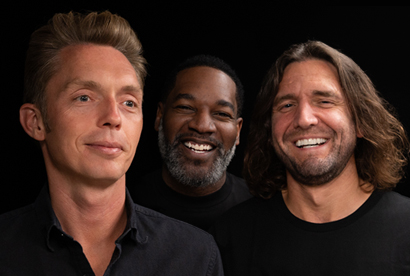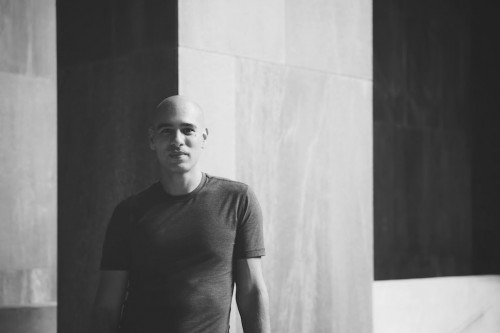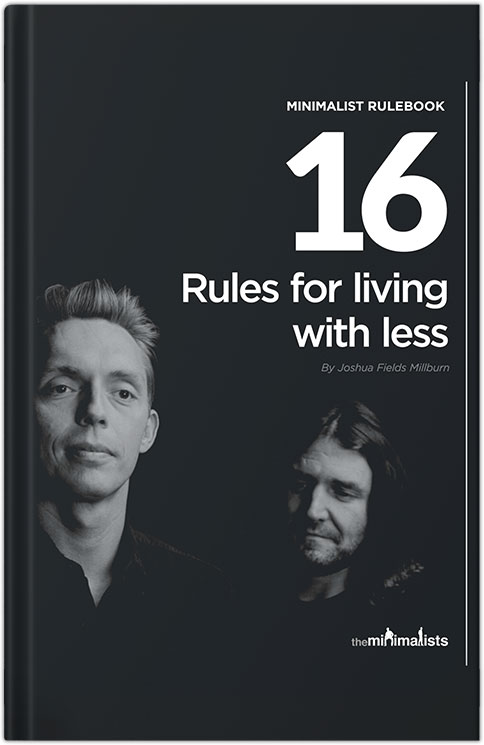The kids, Eva, and I looked out of the train at the cold, foggy day and couldn’t help but shiver. It was the middle of June, and we were colder on our first day in San Francisco than we’d ever been, straight off a plane from Guam.
We’d left behind the only home we’d ever known, with a backpack each on our backs.
It was quite a journey: from a tiny speck in the middle of the vast Pacific, to the most beautiful city in California, just on the verge of another tech boom.
But the more amazing journey was that we each had just about all our possessions in the world on our backs. That would have been unthinkable only four years earlier—and I still had trouble believing my wife and kids would go along with such a crazy idea.
In fact, I had my doubts: if it were just me, I’d be OK with owning almost nothing. But here we were, starting life anew in an unknown city, with the kids never having lived in any city before, and we didn’t have a home, beds, couch, or a car (nor were we planning to get a car).
What kind of madness had I gotten our eight-person family into? Had I just made a huge mistake? With all of their trust resting on my shoulders, I was pretty worried.
Everything turned out OK. We found a home after a couple of weeks shacking up in the living room of my cousin’s house, and we soon grew to love our new city. We found furniture on Craigslist, learned to explore the city by walking and riding mass transit, and found clothes in the great thrift shops.
I learned to trust we’d be OK, even starting life afresh with not many possessions to speak of. I learned we can adapt, survive, and cope with the fear of not being OK.
It still amazes me how far we’ve come, from living in a home piled high with clutter and toys and furniture, to giving up that life. It’s easy for me to make those kinds of changes by myself, but getting my wife who loved shopping and my kids who loved toys to change—that’s the miracle.
How did we make those changes? I remember sitting the kids down in our house in Guam and talking to them about the idea of simplifying: they looked skeptical, and frankly a bit horrified, that I was talking about getting rid of their favorite toys.
But we went into their room, where we couldn’t even see the floor because it was covered in toys, and I pointed out that most of their toys they didn’t play with. Some of them were played with once on Christmas day, only to be stuffed in the back of the closet and forgotten. Others you couldn’t find even if you remembered to look for them, because they were buried in an avalanche of Legos and Transformers and trash.
So I proposed an experiment: let’s box up just the toys they didn’t like, and they could keep everything they really wanted and really used. I wasn’t threatening their favorite things—just clearing the way so they could play with those favorite things more.
Sorting through their junk was fun, and we turned it into a game: how many things could we put in the box that they didn’t need? And wouldn’t it be fun to give some of those things to kids who needed them more? Or give them as gifts to cousins? Decluttering became fun and generous.
Eva and I were going through the same process with our stuff, boxing up piles of junk that had accumulated over the years. I told her she didn’t have to get rid of her shoes, or her favorite clothes, and she was pretty cool with it all. Incredibly, she’s one of the most minimalist people I know now, and travels for weeks with a tiny backpack smaller than mine. What a journey.
We went through stages of decluttering, with our own stuff and with the kids’. We’d remove a few boxes and give them away, and then spend another weekend the following month finding more things they didn’t need. On and on we were shedding layers of dead skin, becoming new people.
Christmas was the hardest transition: we used to go all out and buy them a mountain of toys, because it was fun. They adored Christmas Day for the gorging on gifts that it had become. We talked to them multiple times about what a waste that was, about how we were trying to get out of debt, about how our favorite times as a family were when we spent time together doing fun things. They got that, because their favorite memories weren’t of toys, but of going to the beach, or playing board games, or going to a waterpark.
So they eventually agreed to forgo toys for experience gifts, and that has become our tradition. I think we all still long for the Christmas consumerist feast sometimes, but we treasure the family trips we do together even more.
Layer upon layer, we removed our junk and changed our habits as a family. It didn’t happen overnight, but lasting change never does: It requires an adaptation of your mind to a new normal, one small stage at a time. It requires changing your buying habits, figuring out what your real needs are, and creating new family traditions.
We’ve learned that meaningful change is a slow learning process, but then the best journeys always are.
We came a long way from mountains of broken toys to a backpack each on our backs, entering a new city. This was a frightening sight, the fog of San Francisco, but it turns out, even with few possessions, we were well equipped.
Learn more about Leo Babauta at his blog, Zen Habits.


